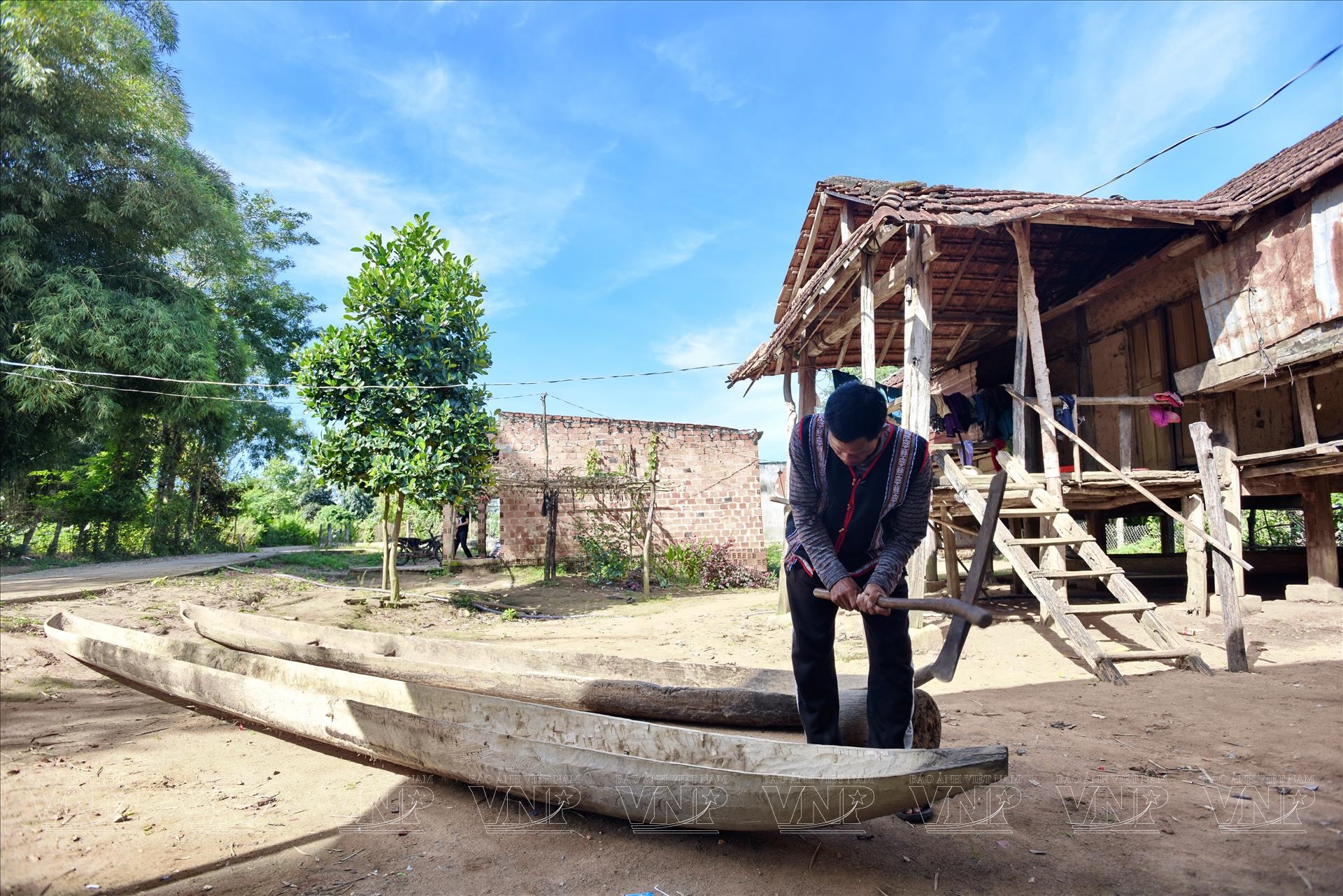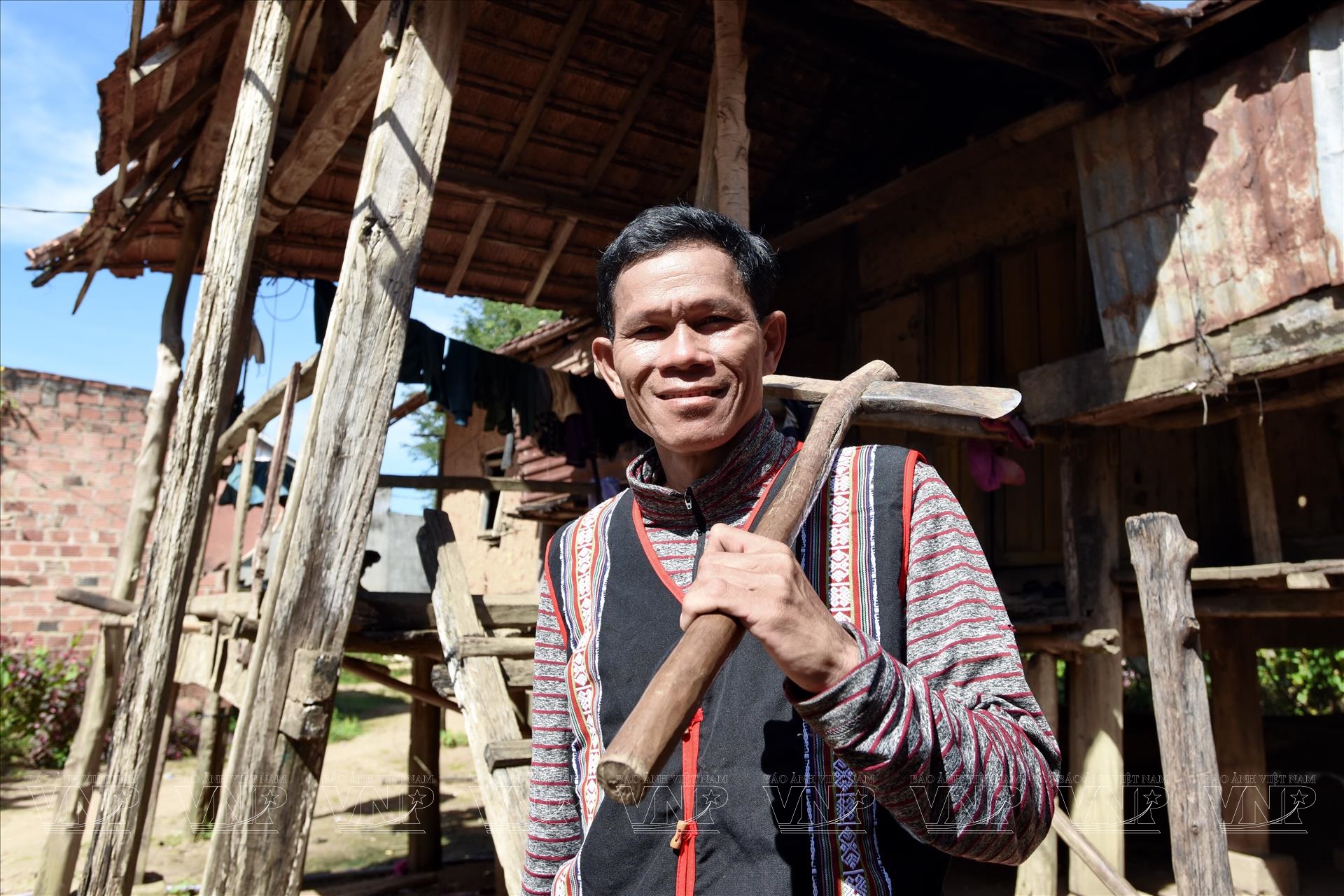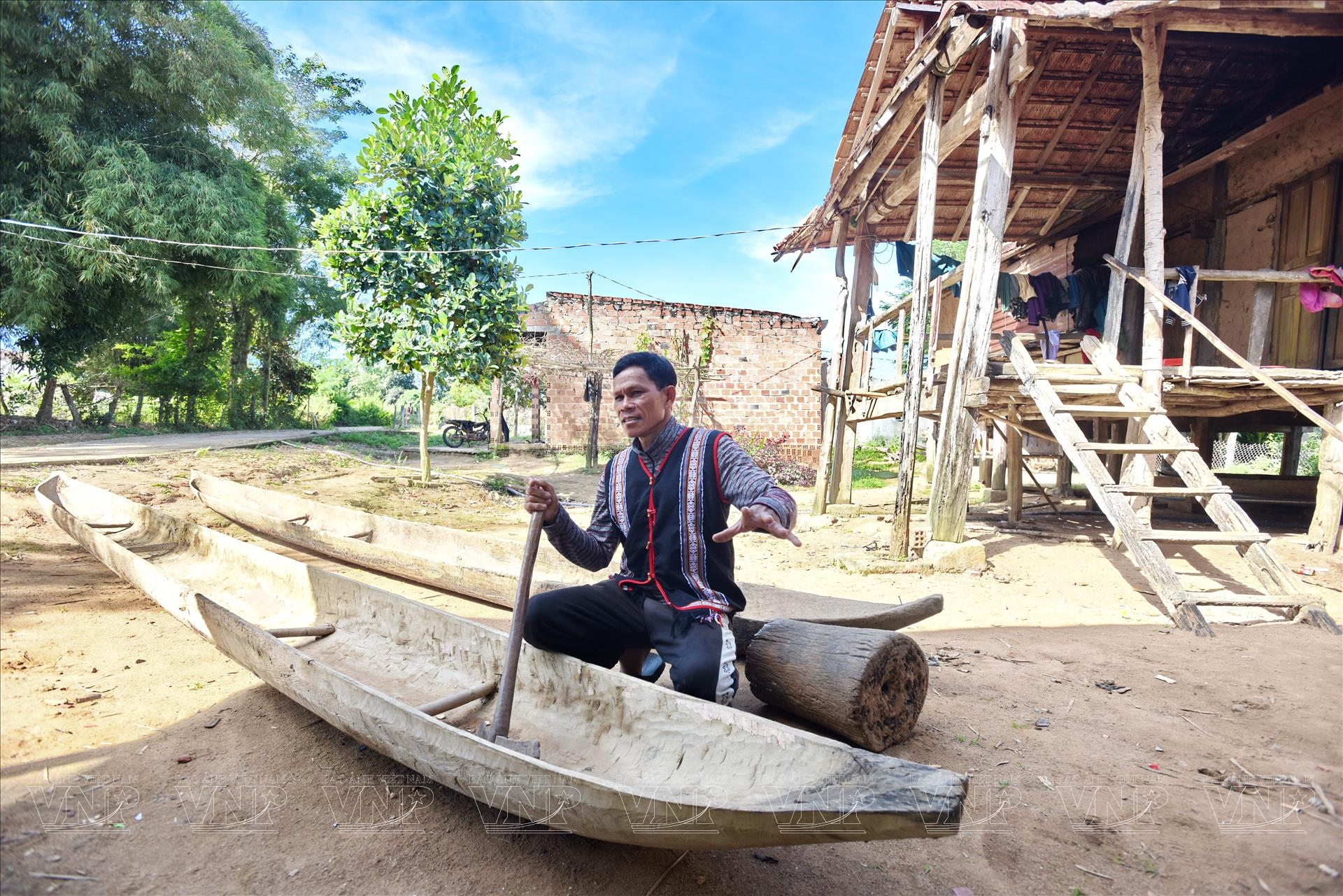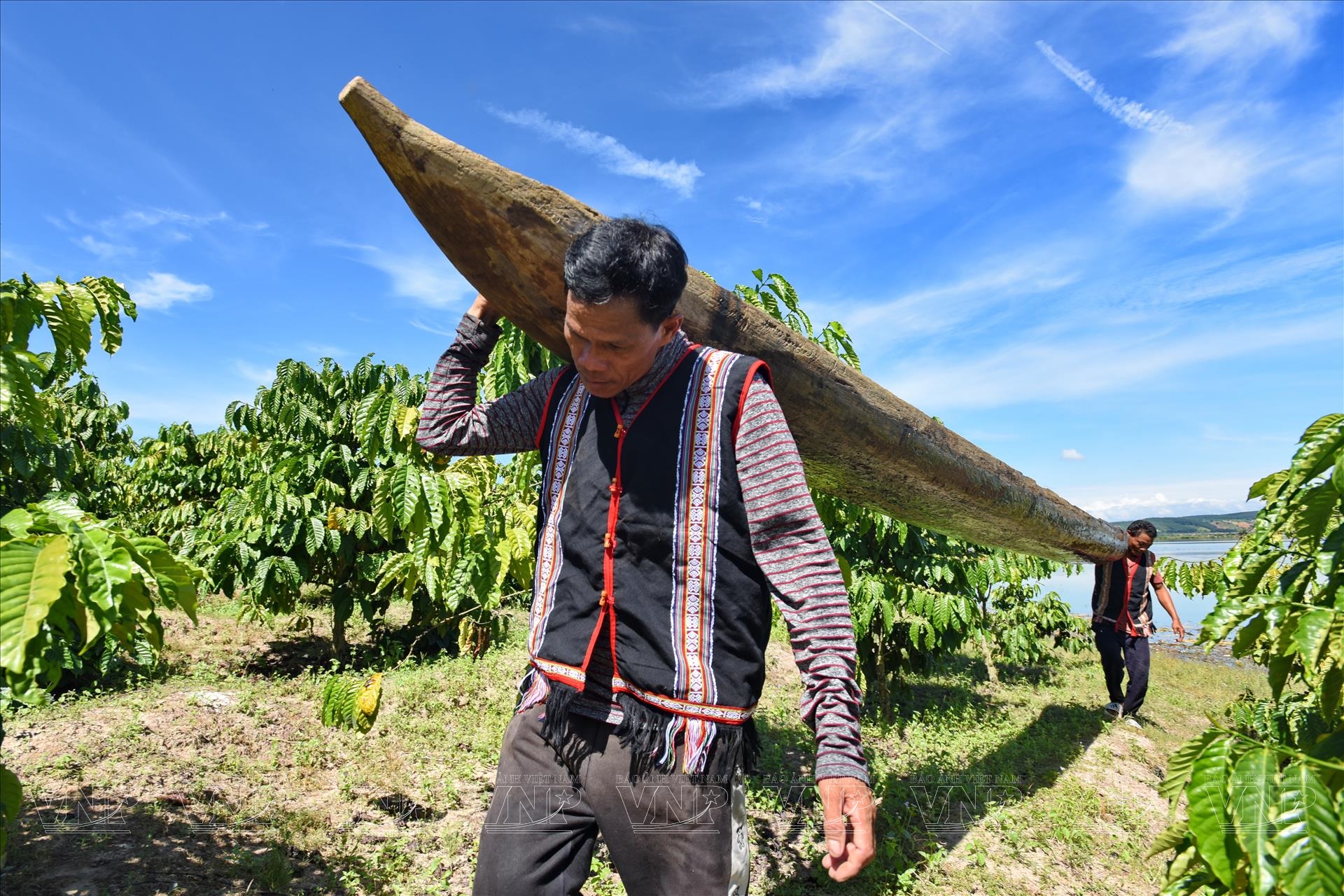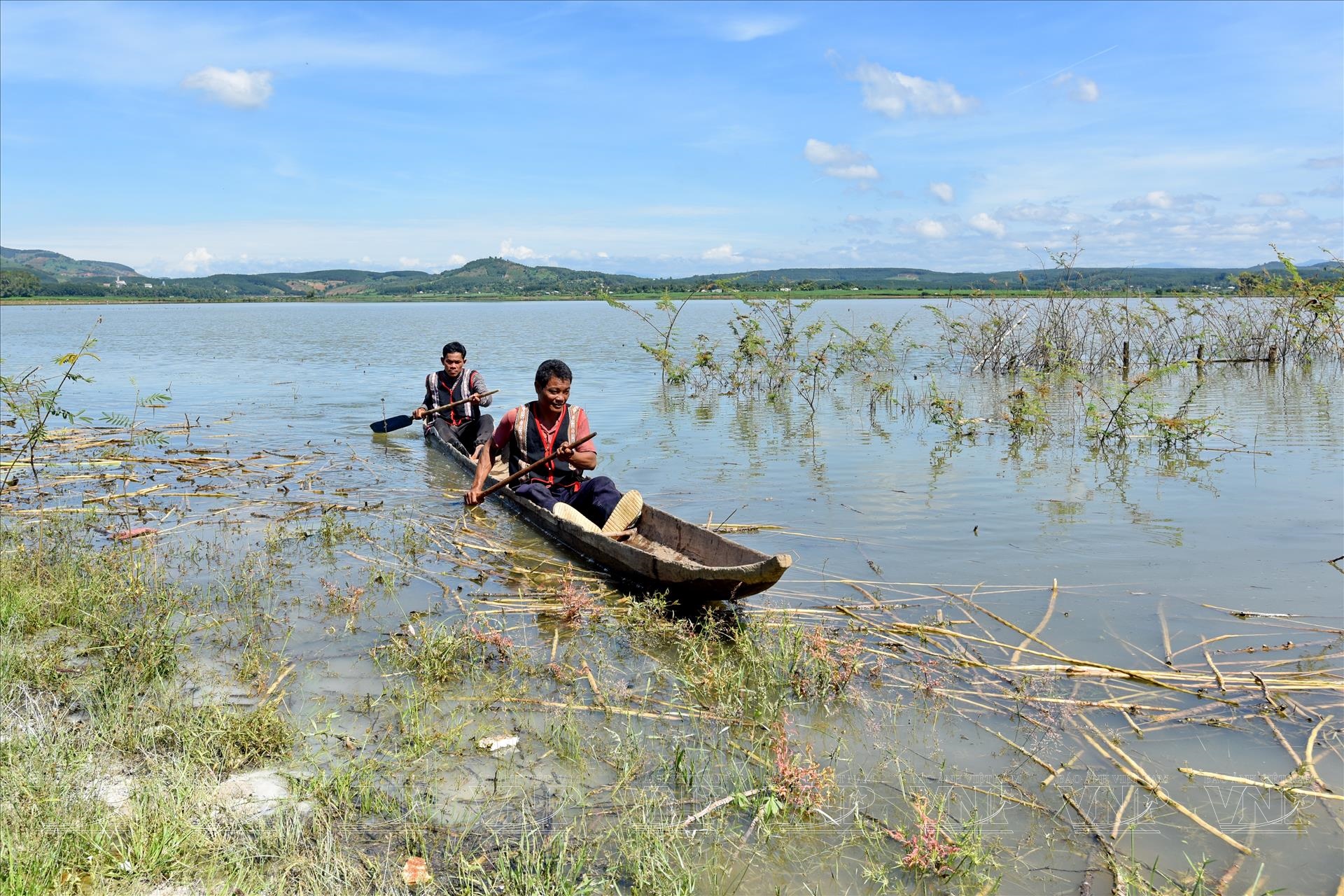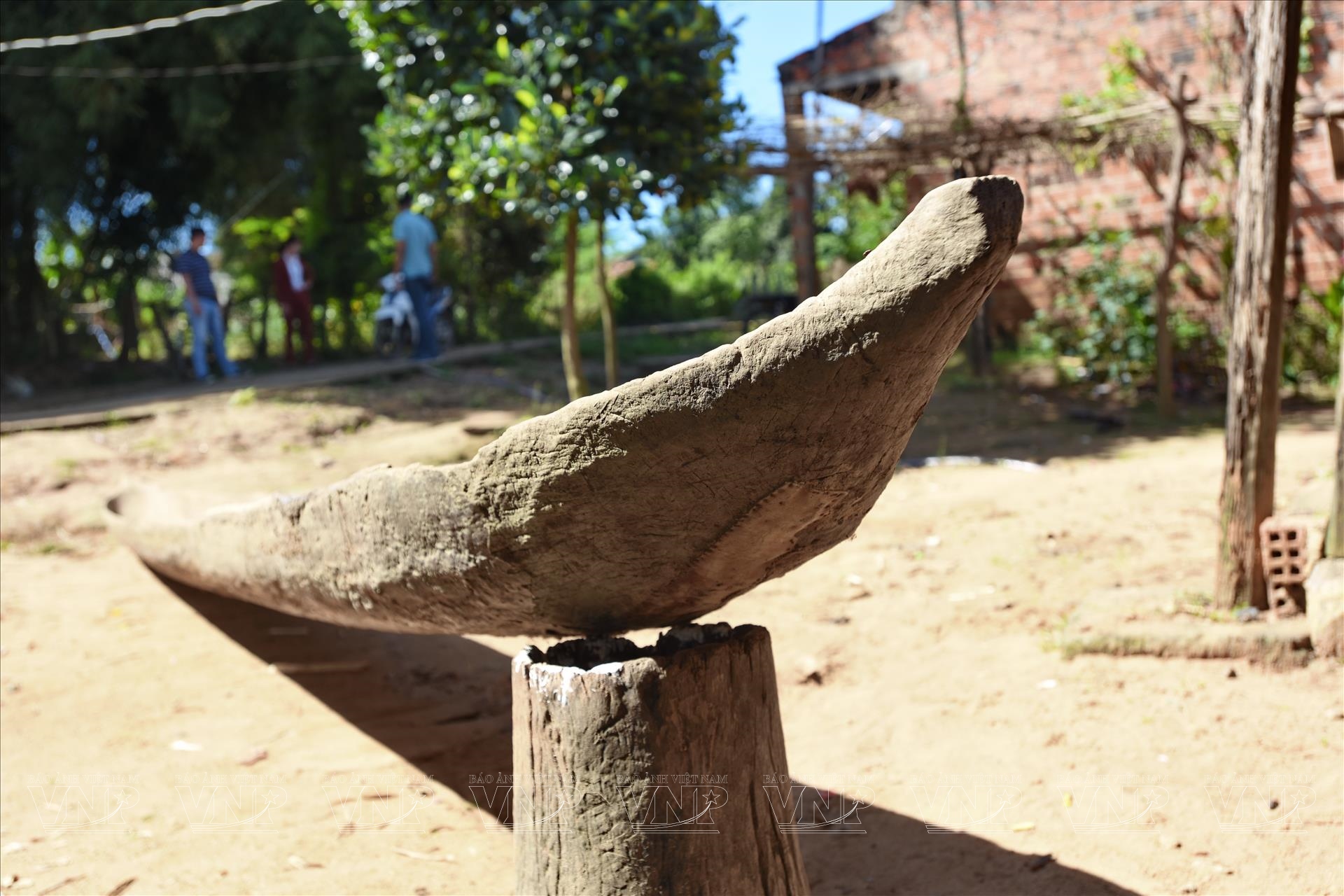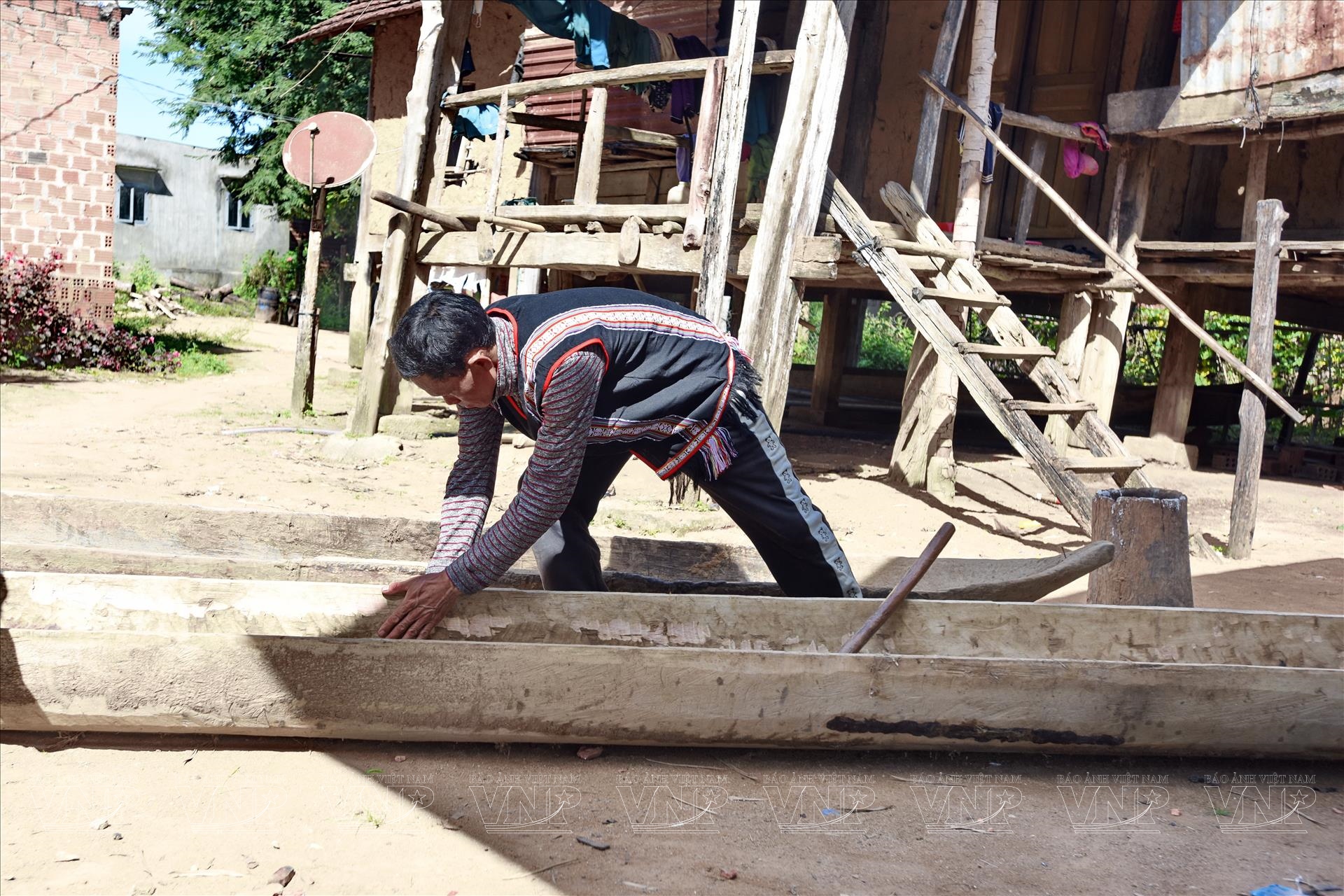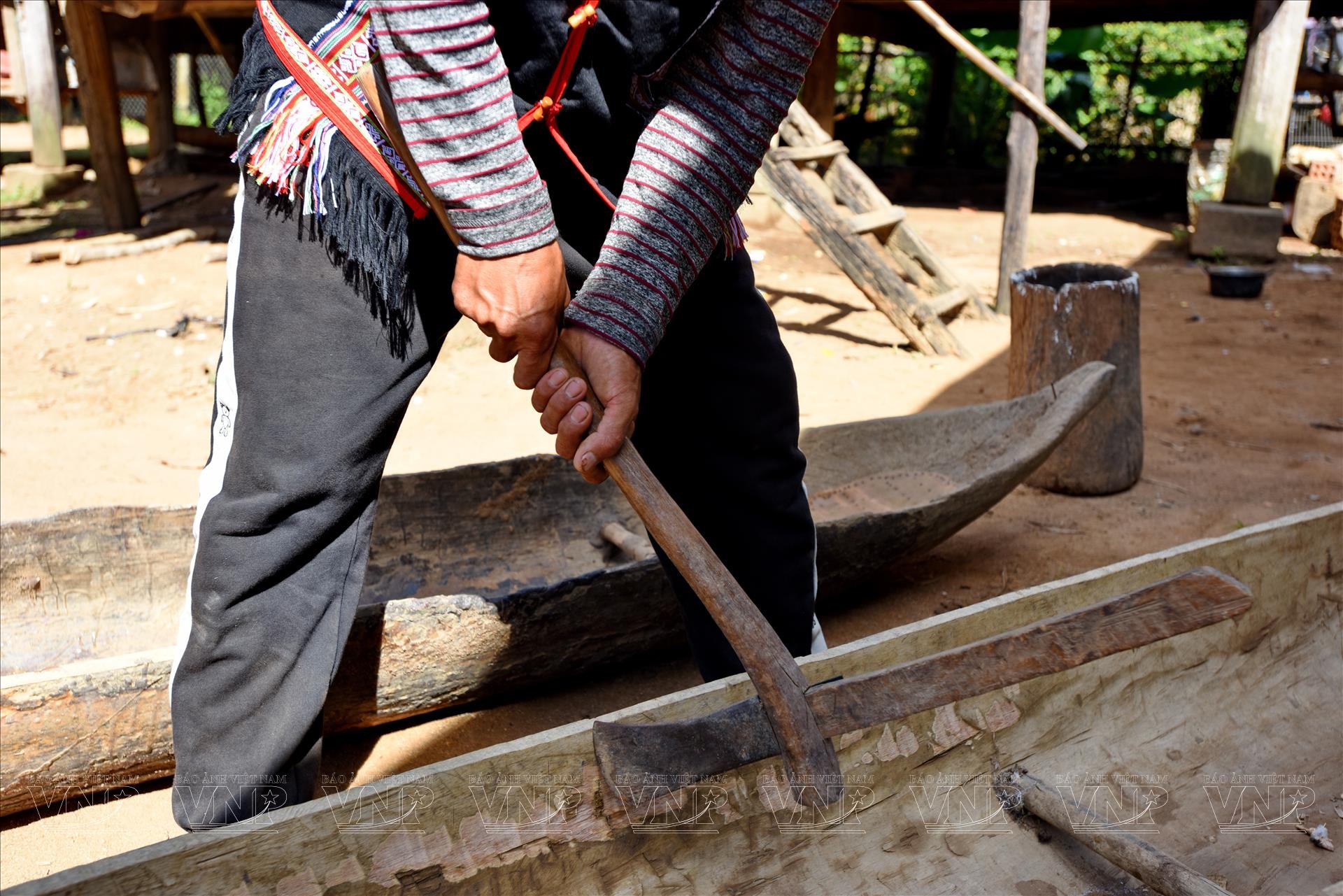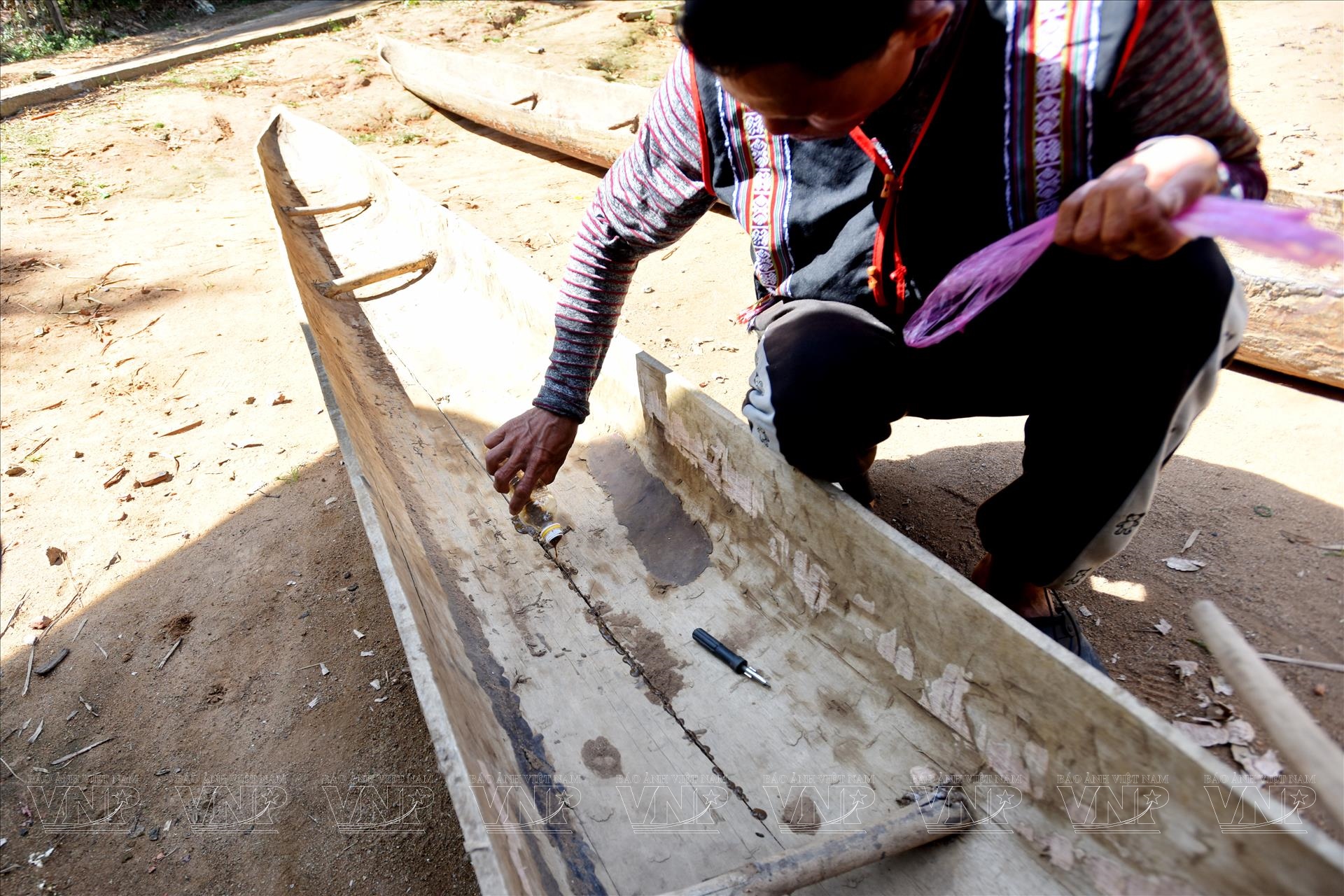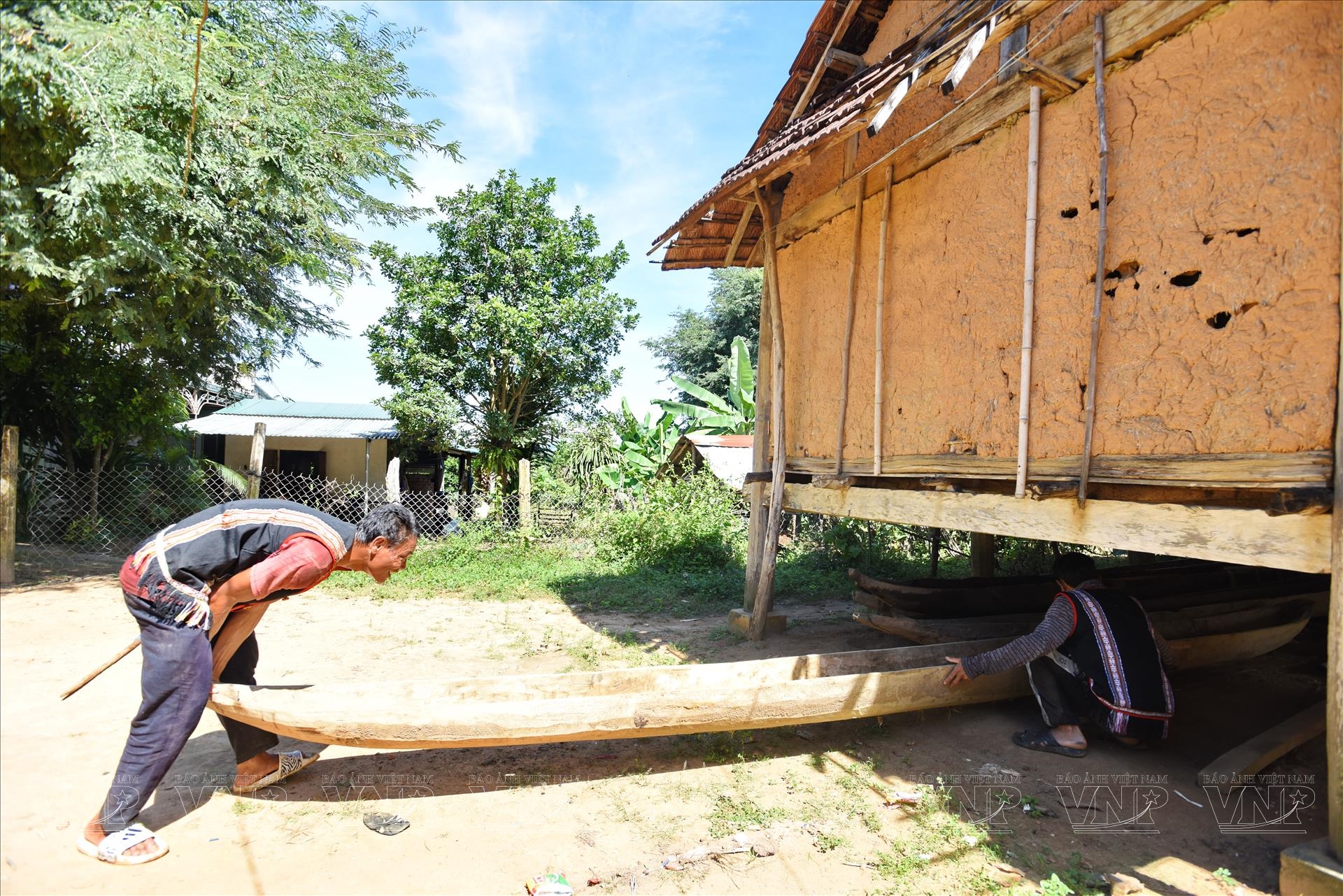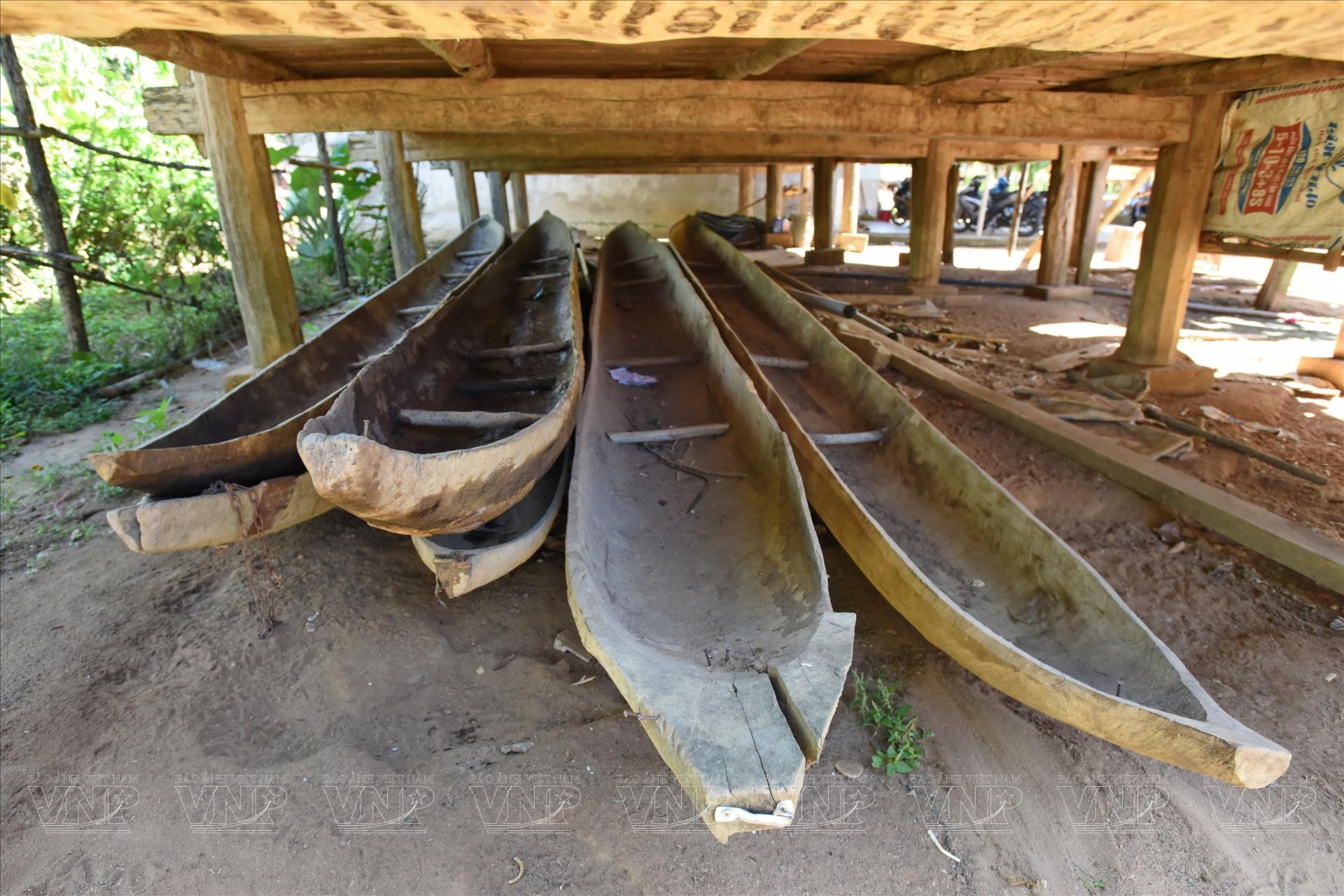Preserving the Art of Dugout Canoe Carving
A Lui, a Bahnar man, is one of the few remaining individuals dedicated to the art of carving dugout canoes along the Dak Bla River. Even though he knows that this traditional craft no longer provides a sufficient income for him and his family in an era where such ancient vessels have largely fallen out of use, he persists in his work.
Living in Lung Leng Village, Sa Binh Commune, Sa Thay District, Kon Tum Province, A Lui is one of the last remaining artisans in the village skilled in crafting dugout canoes. Like many in Lung Leng, A Lui does not know when or by whom these canoes were first created. All he knows is that for generations, these slender wooden boats have been indispensable to the Bahnar, navigating the rocky, rapid-filled stretches of the Dak Bla River.
Lung Leng Village sits along the Dak Bla River, and for the villagers, activities such as farming, fishing, and transporting goods like corn, sweet potatoes, and beans once relied heavily on dugout canoes. These canoes are lightweight and agile, making them ideal for maneuvering through the narrow, treacherous rivers and streams of the rugged Central Highlands.
Historically, the region was abundant with large trees suitable for crafting canoes. However, with restrictions on logging and the advent of modern boats, the use of dugout canoes has significantly declined. Today, they are primarily used during festivals and traditional canoe races.
Dugout canoes have long been intertwined with the lives and culture of the Bahnar. Beyond being practical tools for transportation, they also showcase the skill and artistry of Bahnar craftsmen. According to Lung Leng’s elders, the canoe, called “Plung” in Bahnar, is carved from a single tree trunk, using flexible, water-resistant wood that can withstand most impacts. The size of the canoe depends on the tree used, typically ranging from 5 to 9m in length, though longer ones are possible.
In the past, crafting tools were simple, including hand saws, axes, knives, and chisels. Today, power saws are sometimes used, but the process remains largely manual, relying heavily on the artisan’s experience and skill.
Achieving the right balance for a canoe to glide smoothly and stably on water requires careful calculation of the bow’s curve, the stern’s weight, the hull’s straightness, and the thickness of the sides and bottom. Even the slightest errors in carving can compromise the canoe’s durability and functionality.
A Lui recalls a time when nearly every household owned a dugout canoe. Now, with their decline in everyday use, the number of craftsmen has dwindled. A Lui is one of the few remaining Bahnar artisans in Lung Leng Village who has mastered this craft. For him, continuing the tradition is both a passion and a way to preserve the heritage passed down from his ancestors. While the work is neither frequent nor lucrative, it contributes to safeguarding the village’s canoe-making tradition and ensures the community’s canoe racing team has the best vessels for annual competitions.
In line with a project to preserve and develop traditional crafts of ethnic minorities in Kon Tum Province, the province’s Department of Ethnic Affairs, in collaboration with the Sa Thay District People’s Committee, has organized training workshops in Lung Leng Village. These workshops aim to preserve the craft and teach techniques for maintaining the canoes, protecting them from weather damage and pests.
Although dugout canoes are no longer commonly used in daily life, they remain a vital cultural symbol of the Bahnar in Lung Leng Village. Efforts are underway to integrate them into tourism, offering visitors the chance to experience paddling a dugout canoe and witnessing the traditional canoe races that embody the resilient and spirited culture of the Central Highlands communities along the Dak Bla River.
By Thanh Hoa/VNP Translated by Nguyen Tuoi
